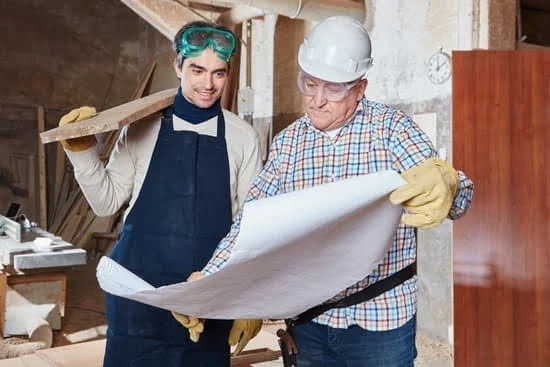Introduction
Laser woodwork is a type of woodworking that uses lasers to mark and create shapes on wood pieces. It involves the use of a laser machine that has been put together to work with wood grain, as opposed to traditional woodworking techniques such as sawing, sanding and drilling. The laser precisely cuts out the desired shape or pattern into the wood using high-powered laser beams. These beams are able to quickly create intricate designs with no risk of misalignment or damage to the material.
The process begins by selecting the appropriate specifications that need to be programmed into the laser machine. This will depend on what type of design is being engraved, such as text, logos or artwork. Once the design is programmed into the machine, it begins etching out each individual area. Usually this can be done in one go without any additional work needed on the wood itself aside from cleaning it up afterward. Additionally, if coloring is desired for certain parts of the design, dyes can be applied prior to engraving and then set in with heat afterwords.
By utilizing laser technology, many types of jobs can now be completed faster and more accurately than possible before. Laser engraving on wooden items allows businesses and individuals to customize items with designs or information they want included while still achieving an attractive result. By combining both traditional methods with modern technology, projects can be created quickly and effectively while remaining aesthetically pleasing at the same time.
The Advantages of Laser Woodwork
Laser woodwork offers several advantages that make it an ideal choice for wood cutting and engraving. Its accuracy and precision allows for intricate designs to be created and replicated continually with little to no errors. Laser woodworking is also much more efficient than traditional methods as these tools require less labor while providing faster cutting speed and detailed results. The laser technology is also easy to use and requires very little setup time so each project can be completed quickly and easily. Additionally, laser woodworking is green efficient as it does not require any harsh chemicals or solvents for its operations – the only thing needed is electricity which has minimal environmental impact. Last but not least, laser-cut products are of high quality thanks to the concentrated power of the beam that cuts into the surface without chipping or splintering, hence resulting in smooth edges.
Creative Ways to Use Laser Woodwork in Your Woodworking Projects
Laser woodwork can be used in a variety of ways in woodworking projects. One traditional way is to use it to create intricate designs, shapes and letters on wooden surfaces. Through laser engraving, it is possible to personalize your craft by adding custom logos or names on the surface of items such as cutting boards and jewelry boxes. This can be especially useful for creating gifts with a special touch.
Another common application for laser woodwork projects is creating 3D designs from thin sheets of wood or cardstock. Through careful manual design and careful application of laser cutting techniques, you can create intricate objects such as puzzles, boxes, and carvings from thin pieces of wood or paper. Not only does this give your work an attractive look, but also creates dimension and movement that’s difficult to achieve without the help of laser technology.
Finally, laser woodwork can also be used for precise cutting projects like furniture joints or geometric art pieces. Using exact measurements provided by computer aided design programs and precise laser cutting machines, complex angles, angles and patterns can be easily achieved with extremely small margins of error. This precision allows the craftsman to produce well-crafted pieces that are highly accurate – making them great choices when built items must fit precisely within their intended place or space.
Different Types of Lasers Used with Laser Woodwork
When it comes to laser woodwork, there are many different types of lasers that can be used. These lasers range from small desktop models to industrial-level machines.
The most common type of laser used in laser woodworking is the CO2 laser. This type of laser emits infrared light, which produces heat when it interacts with certain objects and materials. As a result, this type of laser is ideal for burning or engraving intricate designs into wood or other materials. This is because the intense heat created by this type of laser allows for higher accuracy and detail that would otherwise not be achievable with other methods like hand carving or routing.
Another option that some may choose to use is an ultraviolet Nd:YAG (Neodymium-Yttrium aluminum garnet) laser. This type of laser can also produce high results in engraving and precision cutting since it shares the same qualities as CO2 lasers do but at a cheaper cost. It works by using specific wavelengths of ultraviolet light which will interact with special chemically treated surfaces in order to create precise markings on the desired material.
Finally, Fiber lasers are yet another option for those looking for precise and accurate cuts with their woodworking projects. Fiber lasers emit light on a single wavelength that can then be directed to where it needs to go without harming any surrounding surfaces. This makes fiber lasers ideal for intricate cutting jobs as well as marking projects where deep engravings are required due to its concentrated beam diameter.
Prepping Your Workpiece for Laser Woodwork
Prepping your workpiece for laser woodwork is a very important step. The surface of the wood needs to be clean and smooth, as the laser will only focus on the material that is directly exposed. To start, all imperfections on the surface such as dents or scratches should be filled in with wood putty and sanded down until it’s flush with the rest of the workpiece. Then, use a fine grit sandpaper to create a uniform texture and remove any debris from the grain of the wood so that it will respond better to the laser beam. Finally, make sure you test out your project and adjust accordingly before beginning your laser woodworking project.
Setting Up the Right Laser Woodwork Environment
When setting up the right laser woodwork environment, there are several things to consider. First, the location should be well ventilated because laser cutting produces fumes that may be hazardous. The room should also have metal or concrete walls to help absorb some of the heat generated from the laser beam cutting through materials. Additionally, any combustible material in the vicinity should be removed and proper safety precautions must always be taken when operating a laser cutter. Protective eyewear is a must and protective clothing such as a thick leather or denim jacket is recommended. The workspace should also include an area for tools and other equipment associated with woodworking, including chisels, drills, saws, hammers, and sanders so that projects can be completed efficiently. Finally, it is important to use the correct type of material for your individual project – make sure to follow instructions provided by your laser cutter manufacturer for optimal results.
Expert Tips to Ensure Successful Laser Woodwork
1. Make sure you have a good understanding of laser cutting and etching techniques before beginning your project. Take the time to research the types of wood and other materials that can be safely manipulated by lasers. This will ensure that your laser cutter is working optimally when you are creating intricate designs.
2. Choose the right kind of wood for the piece you’re creating. Different varieties of wood (trees, hardwoods, softwoods etc.) react differently to laser beams, so pick something compatible with the type of project you’re working on. Different woods also change color as they’re exposed to more intense lasers; make sure you pick a color and texture that will be aesthetically pleasing once it’s finished.
3. For complex designs, create a detailed plan before starting on the actual laser cutting itself. Preview the design using computer-aided design software or a 3D printer to give yourself an idea of how it will look once complete, so you can make any adjustments beforehand instead of risking corrective measures later on in the process which could compromise both time and cost-efficiency.
4. Pay attention to safety procedure when working with lasers in your workshop — use special eye protection glasses and protective clothing since even minor exposure to high-powered beams can do damage to human skin tissue and vision if not covered properly.
5. Finally, don’t be afraid to experiment! As long as you stick within safe parameters, try out different materials and find creative solutions for engineering challenges — this could help you get better at producing beautiful pieces of art over time – which will certainly make all your efforts worthwhile!
What Types of Materials Can Be Optimally Laser Cut
Laser woodwork is a popular method for creating intricate wooden art, home decor, and craft projects. With the help of lasers, a variety of materials can be cut into almost any type of shape or design imaginable. Not only are many types of wood great candidates for laser cutting – such as hardwoods, softwoods, MDF, plywood and even bamboo – other materials like acrylics, fabric, paper and even cardboard are all excellent materials that can be cut with a laser to produce high-precision results. This makes it possible to create products with great detail that would otherwise be impossible to replicate by hand. As well, due to the nature of laser cutting there is very little workable waste material; making laser etching cost-effective while also providing an eco-friendly process. Additionally, further treatments such as engraving or painting can be added after the initial process is complete to create unique customized pieces in whatever style desired.
Conclusion
Using a laser to create woodwork has revolutionized the way DIYers make intricate and unique pieces. With laser woodwork, you can achieve complex results in an efficient and precise manner, without having to rely on manual tools or techniques. Laser cutting technology machines can make clean cuts that provide the perfect finish to any piece. You also have access to a wide range of materials, such as acrylic, MDF, hardwoods and so much more. This makes laser woodworking versatile and suitable for almost any kind of project.
Whether you’re making furniture, signs or other objects from wood, using a laser is the best way to take your DIY projects up a notch. It saves time and effort by removing the need for manual tools like saws or drills. Additionally, it guarantees accuracy with the precision it gives even on the most complex shapes and designs. Moreover, due to its versatility, you can use multiple materials in one creation allowing creativity freedom while minimizing mistakes.
Overall, with laser woodwork taking over traditional methods of crafting wooden items, it has never been easier to create memorable pieces with professional results without breaking the bank or needing loads of patience for those smaller details! Start taking your projects further today with this amazing technology!

Hi everyone! I’m a woodworker and blogger, and this is my woodworking blog. In my blog, I share tips and tricks for woodworkers of all skill levels, as well as project ideas that you can try yourself.





